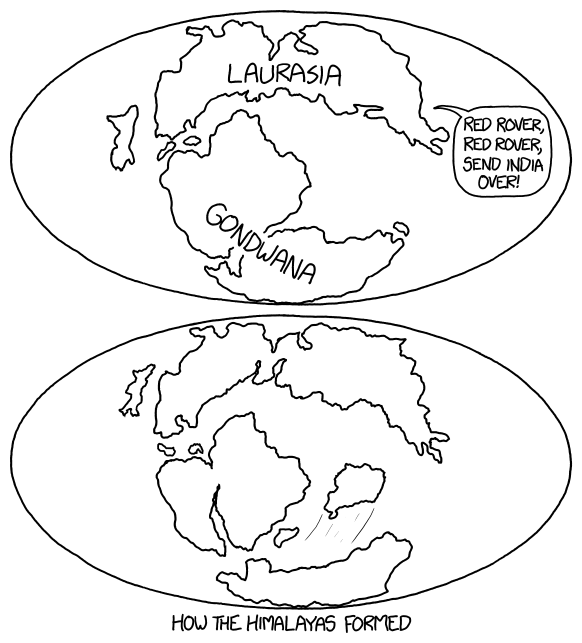What is it about the murder-mystery podcast Serial that makes it so gripping? This question has come up in conversations a lot lately, mostly with other journalists who, like me, instantly got hooked on the This American Life spinoff.
Serial is a weekly podcast that revisits the 1999 murder of a Baltimore high schooler and the man who was convicted of killing her. Each week, reporter Sarah Koenig takes listeners with her as she investigates the crime, the court case, and the characters involved in an attempt to sort out what really happened.
The story, it seems, is a whodunnit. The central question: Is Adnan Syed, in fact, guilty of killing Hae Min Lee?
But Serial is also a story about storytelling. Listeners ride along with Koenig each week as she does her investigative work. We hear the reportorial leads that don't pan out. We're privy to (at least some of) her questions and doubts. And from this format another key question emerges: Is it okay to be enthralled by all this? A person was murdered. In real life. And yet Serial's fans—is it weird to call them fans?—gather around the show like it's Twin Peaks.
Episodic television, of course, took its form at least in part from episodic literature—which in turn influenced what's known today as narrative or longform journalism. The serialized novel was one of the defining features of the 19th-century newspaper. Serialized non-fiction, too, has a long tradition in American journalism. Truman Capote's best seller In Cold Blood first appeared as a four-part serial in The New Yorker in 1965. All this is to say that it's not as though Serial is breaking any new ground with regard to format.

"It's just telling a longer story," the show's executive producer Julie Snyder told me. "And so serializing it kind of felt like it was a normal thing unless you wanted a really long 14-hour story or something, you know? You're going to have to break it out into chapters like the way a book would."
And there are many, many books about real-life murders—about the Boston Strangler, and the Craigslist killer, and the murder of two Dartmouth professors, and on and on. Thinking about production, the most experimental aspect of Serial, Snyder told me, wasn't so much the serialization as it was the idea that Koenig didn't know how the series would end when the first episode aired. The podcast team wondered if people would hear the story and offer information that might influence its outcome. But that's not an unusual approach, either. Just like with an "investigative series in the paper, as you are reporting out the story, more people are going to become aware of the story, see what other people are saying, reach out to you," she said.
So why does Serial feel different somehow?
Snyder says the popularity of the show—and the intensity of listeners's obsession with it—surprised her team. There's something disorienting, she says, about the way the conversation about the show feels akin to the kind of discussion you might find on a subreddit about Lost. Maybe the ethical implications of this kind of storytelling are less McLuhanian—they're not so much about the medium being the message—and more about the cultural context that shapes this moment in broadcast. In other words, maybe it has more to do with the show's listeners than it does with its producers.
Serialized nonfiction in the Internet age means that conversations that might have previously happened around the watercooler are now being published themselves. Which means Serial's audience is producing its own stories full of sleuthing, critique, and conspiracy theories. Slate even recaps the podcast the way it recaps Mad Men.
"That part of it is kind of weird," Snyder said. "I feel like maybe I was really naive... I think all of us are a little taken aback and kind of shocked at the little bit of an attention frenzy. It's a small world of podcast listeners but it does feel like, 'Oh my god. This is a lot more intense than I had ever anticipated.'"
What is it, exactly, that people are participating in here? Are Serial listeners in it for the important examination of the criminal justice system? Or are we trawling through a grieving family's pain as a form of entertainment? These are questions much more easily posed than answered.

What's clear is that a big part of what makes Serial stand out is how relentlessly thorough Koenig's reporting is. (So comprehensive that it's the quality she's lampooned for in this parody.) Koenig makes it obvious in her storytelling that reporting the story ethically—and treating people fairly—is a priority. Some of the thrill in following the story is that listeners are given what feels like a window into her reportorial process—including hints at the bits of info she holds back, whether out of fairness or to ratchet up narrative tension: "I'm going to call this man 'Mr. S,'" she explains in one episode. "I don't want to use his full name for reasons I promise will become clear."
"We are trying everything possible to not feel exploitative or, you know, the Nancy Grace type of a titillating thing or 'Let's get ratings off of the death of somebody,'" Snyder told me. "In all of those ways we've tried to do the opposite... Everybody is a real person. Everybody is a three-dimensional person. Hearing people talk, hearing complicated motivations, letting everybody get a full picture."
It might help, I told Snyder, if I knew what the victim's family thought of all this. Has Koenig talked to them? Will listeners ever hear from the parents of the girl who was killed? Do they see journalistic value in questioning the guilt of the man who was convicted? Seven episodes into what Snyder says will likely be a 12-episode season, we still don't know. On the show, Koenig hasn't yet talked about any attempts to reach the family. (A Baltimore Sun reporter who worked with her on one episode wrote last month that "despite extensive efforts... family members could not be found" when he sought them for an interview.)
"We will talk about it on the show," Snyder told me. But she doesn't want to say anything more about it until then. Fair enough. The narrative arc, after all, is up to the storyteller. That's true on the radio, and in newspapers, and in Facebook status updates. Deciding what information to include and when to include it is what makes something a story in the first place; it is one of the defining parts of any journalist's job.
And yet the decision to release the show weekly wasn't part of some narrative grand plan—it was mostly a way to bake deadlines into the production cycle, Snyder says. (It seems worth noting, too, that if Snyder and her team can raise enough money to produce a second season, they plan on serializing a non-crime investigation next.) The weekly production schedule also may be what makes Serial seem somehow edgier than the investigative crime stories we're used to. "In that regard, I did not foresee it at all," she said. "Maybe because that element of narrative tension spread over a week feels so akin to, 'I haven't felt this way since Breaking Bad,'... 'What's going to happen?'"
But just because something is suspenseful doesn't make it unethical. What Serial really reveals is that the ethical questions it raises about crime reporting and the treatment of victims in the media are the ones we should already be asking.
This article was originally published at http://www.theatlantic.com/technology/archive/2014/11/is-it-wrong-to-be-hooked-on-serial/382500/



























































